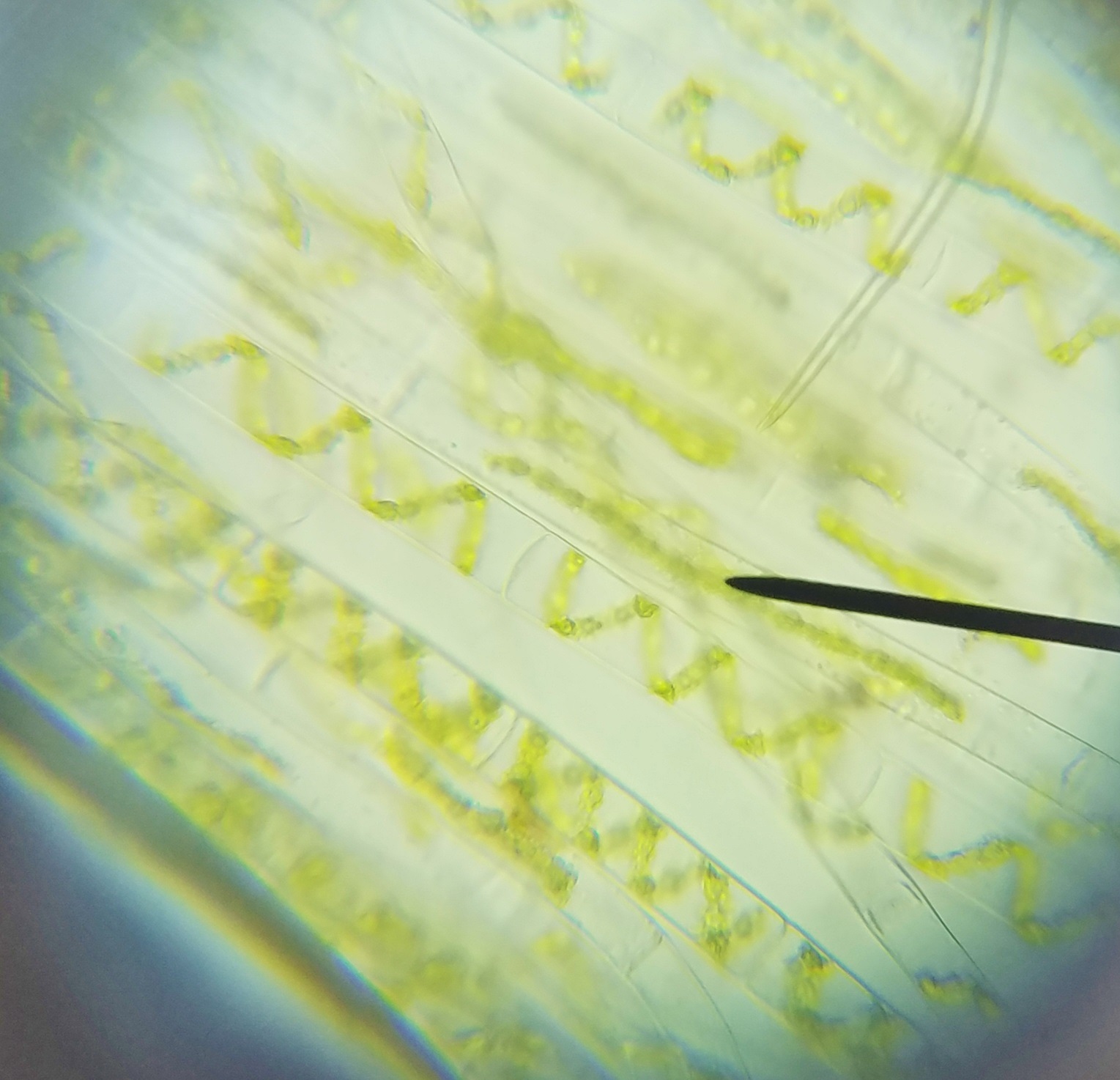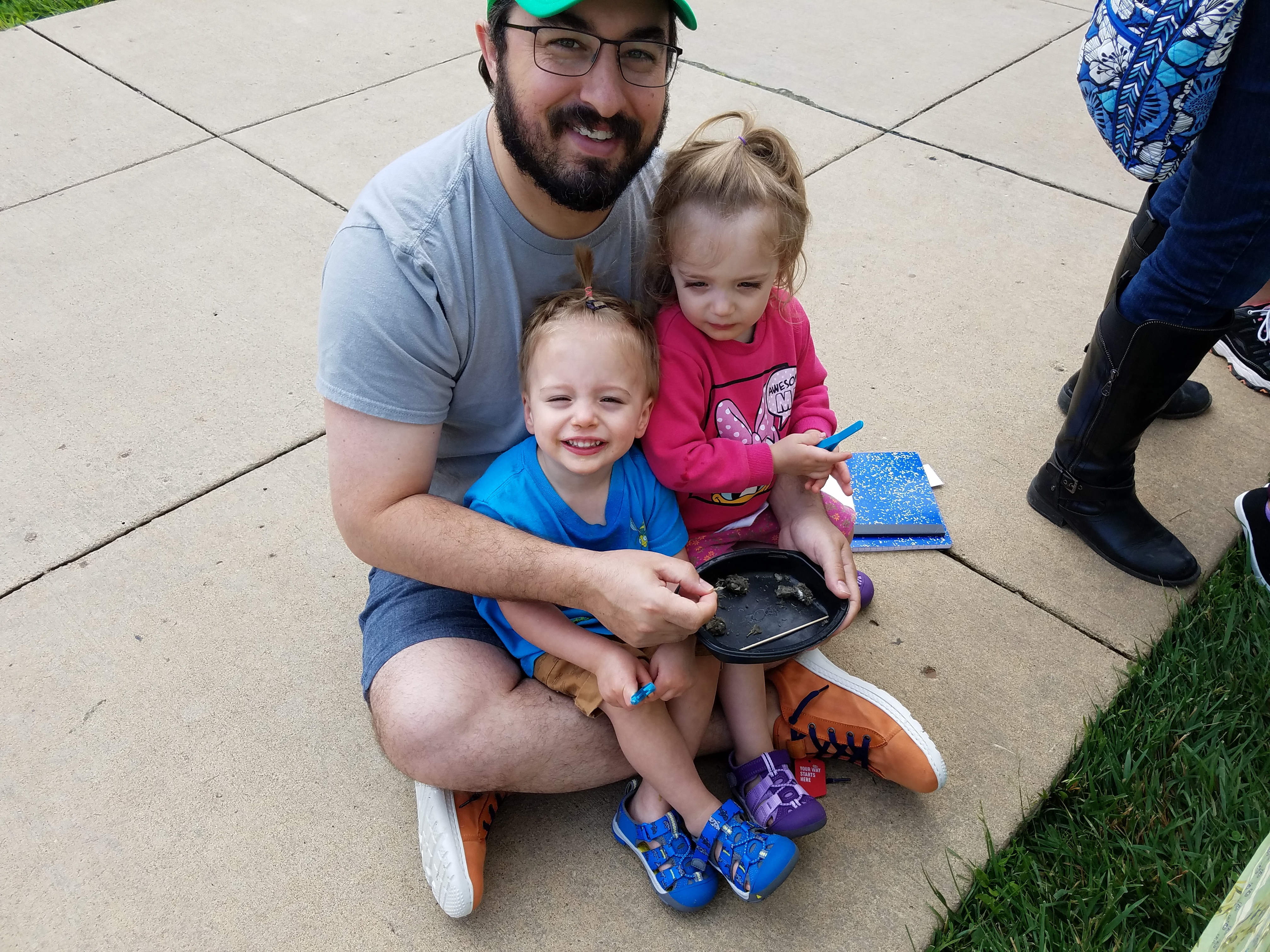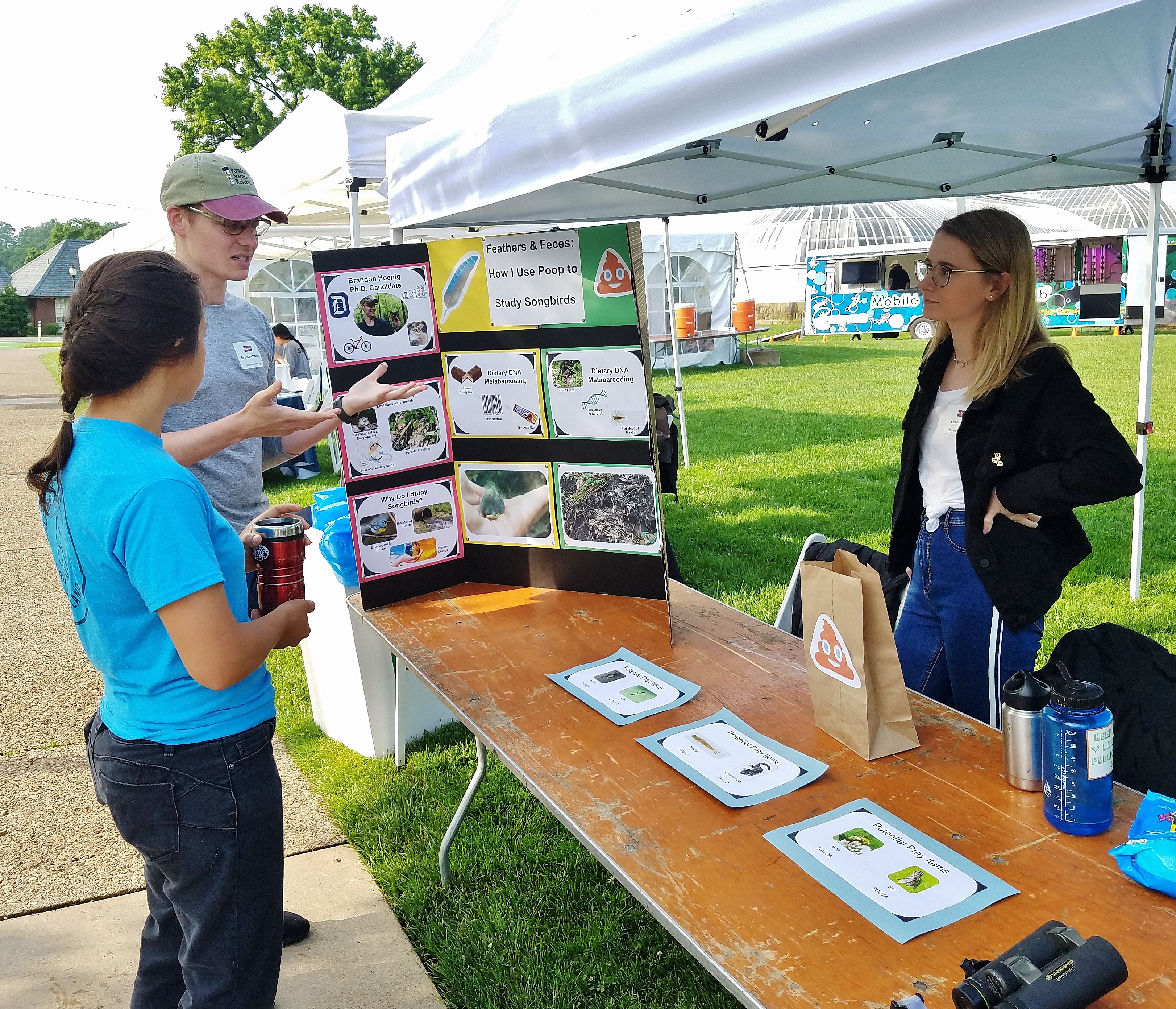Blog

#bioPGH Blog: BioBlitz 2019 Results!
 A resource of Biophilia: Pittsburgh, #bioPGH is a weekly blog and social media series that aims to encourage both children and adults to reconnect with nature and enjoy what each of our distinctive seasons has to offer.
A resource of Biophilia: Pittsburgh, #bioPGH is a weekly blog and social media series that aims to encourage both children and adults to reconnect with nature and enjoy what each of our distinctive seasons has to offer.
The weather was perfect, the plants seemed extra green, and nature enthusiasts of all ages were out in full force at this year’s BioBlitz this past weekend! All day Sunday, the front of lawn of Phipps was bustling with an assortment of local scientists and naturalists, all sharing their work and chatting about the exciting wonders of wild Pennsylvania. If you weren’t able to join us for the big day, check out what the excitement was all about!
Local Scientists and Naturalists
A variety of local researchers and naturalists were present from universities and non-profits across the city. Each of them brought fun games and activities to help demonstrate their work!

Narthana Jeganathar Kanmanii of Duquesne University, left, talks about her work with polluted environments while Lauren Shricker of the University of Pittsburgh, right, shares about her work studying songbird populations.

Dr. Tim Pearce, mollusk curator at the Carnegie Museum of Natural History, found these tiny snails by sifting through leaf litter—BioBlitz guests helped him sift, of course!

Taylor Rosso, left, and Michelle Valkanas, right, of Duquesne University were ready to wow with microbes and water demos.
Michelle’s research at Duquesne focuses on the role of microbes in the remediation of contaminated waters. As a powerful demonstration of the importance of this, watch the above video to see what happens you add a few drops of a basic solution into stream water contaminated by acid mine drainage from abandoned coal mines. Currently, the contaminants are suspended in the water, but the basic solution changes that. Michelle repeated this demo with BioBlitz guests.

Phipps horticulture curator, Dr. Juliana Razryadov, ready to talk carnivorous plants!

Phipps staff Dr. Maria Wheeler-Dubas, left, and Emily Horner, right, help a budding scientist investigate the various algae in pond water from Phipps’ lagoon.

And check out what that budding researcher found! Spirogyra is a fascinating algae whose chloroplasts grow in a spiral shape.

Run into scientitsts out of the lab, and you'll find some of the coolest folks ever! Members of Dr. Tia-Lynn Ashman's lab from the University of Pittsburgh created the Twitter phenom of the day with the hashtag #PollinatorPose - plus they talked about the microbes on the surface of flowers!
Wild Pennsylvania!
Since the goal of the day was to explore the biodiversity of our region, the different exhibitor tables at the event included activities to accomplish just that! For example, at one station, guests could explore the importance of microbes in the soil and water. At another, participants could dissect owl pellets, and at yet another, guests could learn about our monarch butterflies. Phipps art instructor Robin Menard even taught a botanical illustration class, creating a new generation of nature artists!

Local monarch butterfly expert June Bernard has information to share!

Some of our youngest investigators!

Someone found a rodent skull in their owl pellet!

The Western Pennsylvania Mushroom Club always finds fascinating fungi!

Robin Eng from the Allegheny Land Trust was ready to talk about the biodiversity found in the county!

Sara McClelland of Duquense University gave the inside scoop on lab and field techniques for studying wildlife.

Christina Neumann of Apoidea Apiary found some incredible pollinators, like this bumble bee. (Photo credit, Christina Neumann)

Brandon Hoenig of Duquesne University talks about his research focused on the diet of Louisiana Waterthrush nestlings at a table titled "Feathers and Feces: How I Use Poop to Study Songbirds."
Guided Nature Walks
All of this doesn’t even include a primary feature of BioBlitz—the guided nature walks into Schenley Park! The tours covered everything from native plants and trees to mushrooms to use of the handy app iNaturalist, and walks were led by local professors and experts, such as local birding blogger Kate St. John of Outside My Window, Pittsburgh Parks Conservancy staff, and plant biologist Dr. Sara Kuebbing.

One of the guided nature walks heads into the park.

Participants from the Tracks and Scats walk took home cast models of red fox footprints!
Final Results
Central to a bioblitz, though, is the data collection. This past Sunday, our researchers identified 146 different species of plants, animals, and fungi within Schenley Park, and as this is the fourth BioBlitz that Phipps has hosted, we now have four exciting years of data!

This year had a noticeable drop in the number of plants and invertebrates, but don’t be alarmed for your park! This was a reflection of different specialties of the scientists present this year when compared to previous years. That is why multi-year data is so important for the big picture of conservation! A single year's snapshot can never tell the whole story, and we are happy to keep this going year after year.
Below is the species list of everything identified on Sunday, June 2 within the boundaries of Schenley Park:
Plants
Sugar maple | Acer saccharum
Bottlebrush buckeye | Aesculus parviflora
White snakeroot | Ageratina altissima
Tree of heaven | Ailanthus altissima
Pawpaw | Asimina triloba
Moss | Bryophyta
Hackberry | Celtis occidentalis
Eastern redbud | Cercis canadensis
Kentucky yellowwood | Cladrastis kentukea
Unknown | Commelinales sp.
Tickseed | Coreopsis sp.
Flowering dogwood | Cornus florida
Hawthorn | Crataegus sp.
White wood aster | Eurybia divaricata
European beech | Fagus sylvatica
Giant knotweed | Fallopia sachalinensis
White ash | Fraxinus americana
Bedstraw | Galium aparine
Geum sp. | Geum sp.
Gingko | Ginkgo biloba
Ground-ivy | Glechoma hederacea
Kentucky coffee tree | Gymnocladus dioicus
American holly | Ilex opaca
Unknown | Liquidambar sp.
Sweetgum | Liquidambar styraciflua
Tulip poplar | Liriodendron tulipifera
Japanese honeysuckle | Lonicera japonica
Amur honeysuckle | Lonicera maackii
Empress tree | Paulownia tomentosa
Mock oranges | Philadelphus sp.
Pokeweed | Phytolacca americana
Fleawort | Plantago sp.
Mayapple | Podophyllum peltatum
Solomon's seal | Poygonatum sp
Black cherry | Prunus serotina
White oak | Quercus alba
Swamp white oak | Quercus bicolor
Burr oak | Quercus macrocarpa
Swamp Spanish oak | Quercus palustris
Red oak | Quercus rubra
Unknown oak | Quercus sp.
Buttercup | Ranunculus
Buckthorn | Rhamnus cathartica
Black locust | Robinia pseudoacacia
Blackberry | Rubus sp.
Black snakeroot | Sanicula sp.
Zigzag goldenrod | Solidago caesia
Spirogyra | Spirogyra sp.
Bladdernut | Staphylea trifoliata
Dandelion | Taraxacum erythrospermum
Basswood | Tilia americana
Poison ivy | Toxicodendron radicans
Spiderwort | Tradescantia sp.
White clover | Trifolium repens
Eastern hemlock | Tsuga canadensis
Cattail | Typha sp.
Elm | Ulmus sp.
Wild grape | Vitis sp
Mammals
Eastern cottontail | Sylvilagus floridanus
White tailed deer | Odocoileus virginianus
Chipmunk | Tamias striatus
Birds
Acadian Flycatcher | Empidonax virescens
American Goldfinch | Spinus tristis
American Robin | Turdus migratorius
Belted Kingfisher | Megaceryle alcyon
Blue Jay | Cyanocitta cristata
Carolina Chickadee | Poecile carolinensis
Common Grackle | Quiscalus quiscula
Eastern Phoebe | Sayornis phoebe
Eastern Wood-Pewee | Contopus virens
Gray Catbird | Dumetella carolinensis
Hairy Woodpecker | Dryobates villosus
House Finch | Haemorhous mexicanus
House Sparrow | Passer domesticus
House Wren | Troglodytes aedon
Mourning Dove | Zenaida macroura
Northern Cardinal | Cardinalis cardinalis
Northern Flicker | Colaptes auratus
Northern Rough-winged Swallow | Stelgidopteryx serripennis
Peregrine Falcon | Falco peregrinus
Red-eyed Vireo | Vireo olivaceus
Red-tailed Hawk | Buteo jamaicensis
Red-winged Blackbird | Agelaius phoeniceus
Ruby-throated Hummingbird | Archilochus colubris
Scarlet Tanager | Piranga olivacea
Song Sparrow | Melospiza melodia
Wood Thrush | Hylocichla mustelina
Yellow Warbler | Setophaga petechia
Fish
Bluegill | Lepomis machrochirus
Amphibians
American Bullfrog | Lithobates catesbeianus
Mollusks
Carychium minimum
Carychium exile
Punctum minutissimum
Ventridens ligera
Zonitoides arboreus
Arion subfuscus
Insects
Ants | Formicidae
Bad-wing Moth | Dyspteris abortivaria
Eastern Black Carpenter Ant | Camponotus pennsylvanicus
Hackberry Emperor | Asterocampa celtis
Whitetails | Plathemis
Winged and Once-winged Insects | Pterygota
Brown Belted Bumblebee | Bombus griseocollis
Eastern bumblebee | Bombus impatiens
honey bee | Apis mellifera
Wool Carder bee | Anthidium manicatum
Hoverflies | Syrphidae species
Wasp | Vespa species
Fungi and Lichens
Arcyria denudata | Pink Carnival Candy Slime
Boletus sp.
Ceratiomyxa fruticulosa | Coral Slime
Clavicorona pyxidata (AKA Artomyces pyxidatus)
Exidia glandulosa | Beech Jelly Roll
Exidia recisa | Brown jelly roll
Hemitrichia clavata
Hydnochaete olivacea | Brown-toothed crust fungus
Hypomyces chrysospermus | Bolete Mold
Hypoxylon multiforme
Infected Russula
Inocybe fastigiata | AKA Inocybe rimosa
Inocybe sp.
Irpex lacteus | Milk-white Toothed-Polypore
Kretzschmaria deusta | Carbon Cushion Brittle Cinder
Leucogloea compressa
Lycogala epidendrum | Wolf's Milk Slime
Mycena galericulata (Common Mycena; Rosy-gill Fairy-helmet)
Neofavolus alveolaris (Hexagonal-pored Polypore)
Panaeolus foenisecii | The Lawn Mowers Mushroom
Parasola sp.
Peniophora albobadia | Giraffe spots
Pluteus cervinus | Deer Mushroom
Polyporaceae
Polyporus varius
Russula flavisiccans
Schizophyllum commune | Splitgill mushroom
Scutellinia | Eyelash cups
Scutellinia scutellata | Reddish Eyelash Cup
Stereum complicatum | Crowded Parchment
Stereum ostrea | False Turkey-tail
Tetrapyrgos nigripes | Black-footed Marasmus
Trametes pubescens
Trametes versicolor | Turkey-tail
Tyromyces chioneus | White Cheese Polypore
Xylaria polymorpha | Dead Man's Fingers
Xylaria vasconica
Candelaria | Candleflame lichen
If you missed us, be sure to check it out next year! And we would like to thank all of the organizations, scientists, naturalists, and educators who joined us for a truly spectacular day of appreciating nature!
Thank you to the City of Pittsburgh, Carnegie Museum of Natural History, Robin Menard, researchers from Duquesne University and the University of Pittsburgh, BikePGH, Commonwealth Charter Academy, the Citizen Science Lab, PennFuture, the Group Against Smog and Pollution, PA Master Naturalist, Allegheny Land Trust, the Pittsburgh Parks Conservancy, the Western Pennsylvania Mushroom Club, and all of you who came out for a great day with us!

